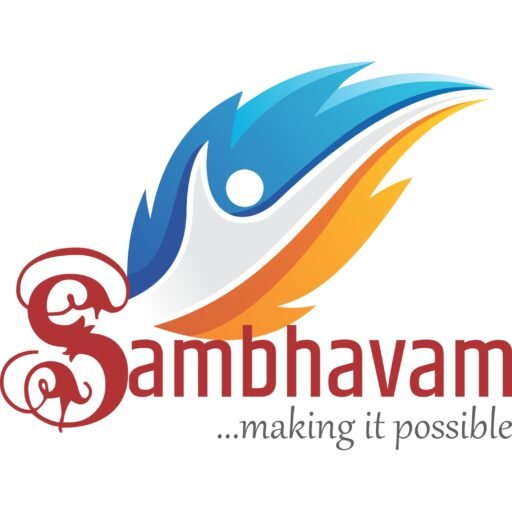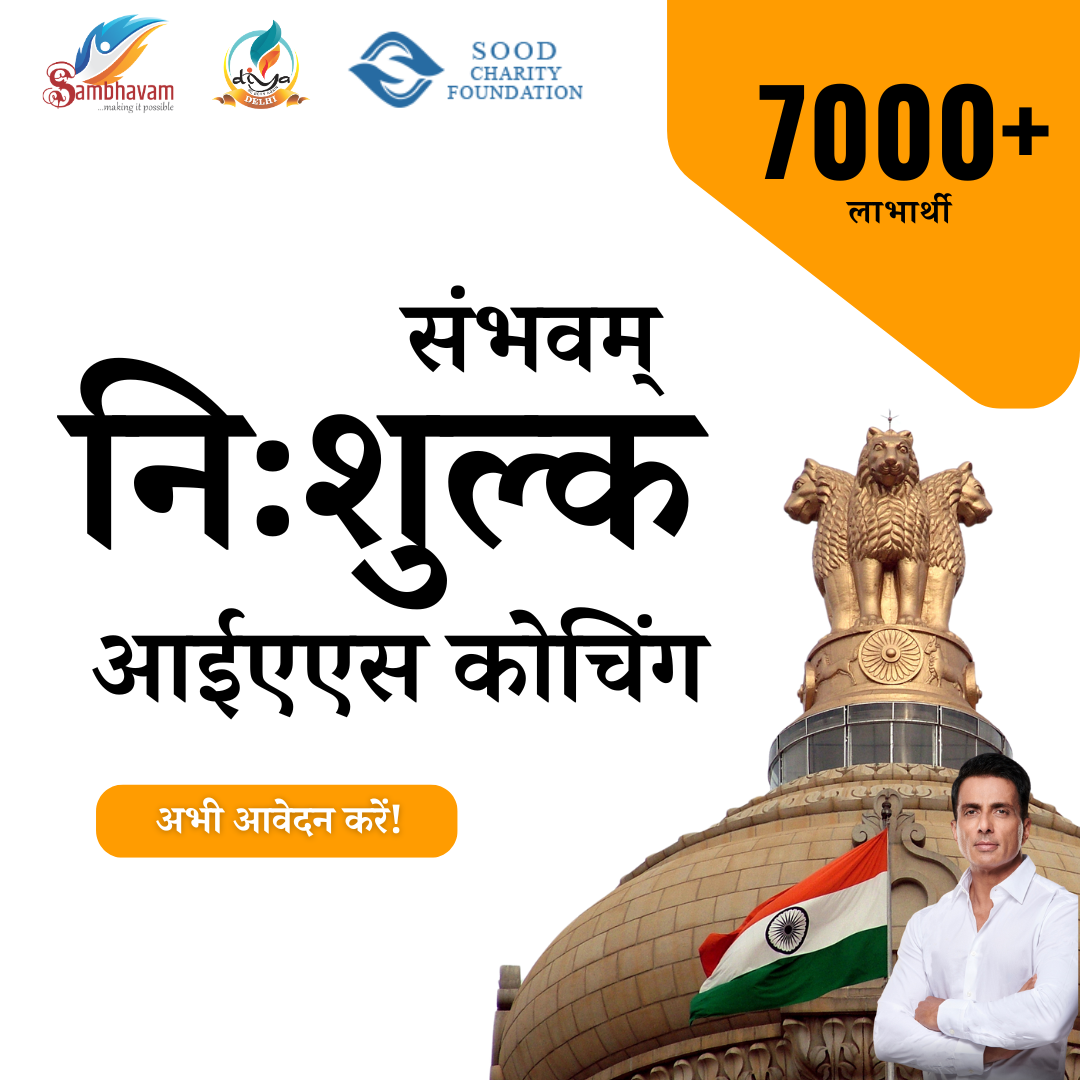History
OUR OFFERINGS & KEY FEATURES
- COMPREHENSIVE SYLLABUS COVERAGE OF BOTH PAPER 1 & PAPER 2
- 1 TO 1 PERSONAL MENTORSHIP BY EXPERTS FOR CONTINOUS SUPPORT
- PYQ & TREND ANALYSIS ON LATEST UPSC PATTERN
- ANSWER WRITING VIA TEST SERIES & EVALUATION BY TEACHERS & EXPERTS
- HISTORY MAPPING CLASSES SEPARATELY
- LIVE ONLINE CLASSES ON ZOOM APP & OFFLINE RECORDINGS AVAILABLE
ABOUT THE FACULTY

Souvik Mondal sir has spent over half a decade in amassing knowledge in the field of Civil Services. Sir has an ocean of experience of teaching and mentoring 3000+ hours of lectures to over 2000+ students from all across the subcontinent.
Souvik sir is a dedicated and experienced teaching
professional with proven success ensuring quality training to prospective civil services aspirants.
Sir has been a renowned faculty for History and
International Relations at
- GS SCORE
- Chanakya IAS Academy
- Alva’s foundation, etc.
IMPORTANT DATES
| Event | Details |
|---|---|
| Application Starts | 1st November, 2023 |
| Application Ends | 20th January, 2024 |
| Commencement of Online Classes | Already Started (ongoing) |
| Online Class Duration | November, 2023 - April, 2024 |
| Course Fee | Rs. 9491/- (EMI option also available) |
*If you face any technical issues via UPI ID And QR Code, please use Direct Bank Transfer Mechanism for smooth payment of fee.
Brochure
Section – A
- Sources Archaeological sources :
Exploration, excavation, epigraphy, numismatics, monuments.
Literary sources:
Indigenous : Primary and secondary; poetry, scientific literature, literature, literature in regional languages, religious literature.
Foreign account: Greek, Chinese and Arab writers.
- Pre-history and Proto-history : Geographical factors; hunting and gathering (paleolithic and mesolithic); Beginning of agriculture (neolithic and chalcolithic).
- Indus Valley Civilization : Origin, date, extent, characteristics-decline, survival and significance, art and architecture.
- Megalithic Cultures : Distribution of pastoral and farming cultures outside the Indus, Development of community life, Settlements, Development of agriculture, Crafts, Pottery, and Iron industry.
- Aryans and Vedic Period : Expansions of Aryans in India :
Vedic Period: Religious and philosophic literature; Transformation from Rig Vedic period to the later Vedic period; Political, social and economical life; Significance of the Vedic Age; Evolution of Monarchy and Varna system.
- Period of Mahajanapadas : Formation of States (Mahajanapada): Republics and monarchies; Rise of urban centres; Trade routes; Economic growth; Introduction of coinage; Spread of Jainism and Buddism; Rise of Magadha and Nandas.
Iranian and Mecedonian invasions and their impact.
- Mauryan Empire : Foundation of the Mauryan Empire, Chandragupta, Kautilya and Arthashastra; Ashoka; Concept of Dharma; Edicts; Polity, Administration, Economy; Art, architecture and sculpture; External contacts; Religion; Spread of religion; Literature.
Disintegration of the empire; sungas and Kanvas.
- Post-Mauryan Period (Indo-Greeks, Sakas, Kushanas, Western Kshatrapas) : Contact with outside world; growth of urban centres, economy, coinage, development of religions, Mahayana, social conditions, art, architecture, culture, literature and science.
- Early State and Society in Eastern India, Deccan and South India: Kharavela, The Satavahanas, Tamil States of the Sangam Age; Administration, Economy, land grants, coinage, trade guilds and urban centres; Buddhist centres; Sangam literature and culture; Art and architecture.
- Guptas, Vakatakas and Vardhanas: Polity and administration, Economic conditions, Coinage of the Guptas, Land grants, Decline of urban centres, Indian feudalism, Caste system, Position of women, Education and educational institutions; Nalanda, Vikramshila and Vallabhi, Literature, scientific literature, art and architecture.
- Regional States during Gupta Era: The Kadambas, Pallavas, Chalukyas of Badami; Polity and Administration, Trade guilds, Literature; growth of Vaishnava and Saiva religions. Tamil Bhakit movement, Shankaracharya; Vedanta; Institutions of temple and temple architecture; Palas, Senas, Rashtrakutas, Paramaras, Polity and administration; Cultural aspects. Arab conquest of Sind; Alberuni, The Chaluky as of Kalyana, Cholas, Hoysalas, Pandyas; Polity and Administration; Local Government; Growth of art and architecture, religious sects, Institution of temple and Mathas, Agraharas, education and literature, economy and society.
- Themes in Early Indian Cultural History: Languages and texts, major stages in the evolution of art and architecture, major philosophical thinkers and schools, ideas in Science and Mathematics.
Section – B
- Early Medieval India, 750-1200: Polity : Major political developments in Northern India and the peninsula, origin and the rise of Rajputs.
— The Cholas: administration, village economy and society “Indian Feudalism”.
— Agrarian economy and urban settlements.
— Trade and commerce.
— Society: the status of the Brahman and the new social order.
— Condition of women.
— Indian science and technology.
- Cultural Traditions in India, 750-1200: Philosophy: Skankaracharya and Vedanta, Ramanuja and Vishishtadvaita, Madhva and Brahma-Mimansa.
— Religion: Forms and features of religion, Tamil devotional cult, growth of Bhakti, Islam and its arrival in India, Sufism.
— Literature: Literature in Sanskrit, growth of Tamil literature, literature in the newly developing languages, Kalhan’s Rajtarangini, Alberuni’s India.
— Art and Architecture: Temple architecture, sculpture, painting.
- The Thirteenth Century: Establishment of the Delhi Sultanate: The Ghurian invasions – factors behind Ghurian success.
— Economic, Social and cultural consequences.
— Foundation of Delhi Sultanate and early Turkish Sultans.
— Consolidation: The rule of Iltutmish and Balban.
- The Fourteenth Century: “The Khalji Revolution”.
— Alauddin Khalji: Conquests and territorial expansion, agrarian and economic measure.
— Muhammad Tughluq: Major projects, agrarian measures, bureaucracy of Muhammad Tughluq.
— Firuz Tugluq: Agrarian measures, achievements in civil engineering and public works, decline of the Sultanate, foreign contacts and Ibn Battuta’s account.
- Society, Culture and Economy in the Thirteenth and Fourteenth Centuries: Society: composition of rural society, ruling classes, town dwellers, women, religious classes, caste and slavery under the Sultanate, Bhakti movement, Sufi movement.
— Culture: Persian literature, literature in the regional languages of North India, literaute in the languages of South India, Sultanate architecture and new structural forms, painting, evolution of a composite culture.
— Economy: Agricultural Production, rise of urban economy and non-agricultural production, trade and commerce.
- The Fifteenth and Early Sixteenth Century-Political Developments and Economy: Rise of Provincial Dynasties : Bengal, Kashmir (Zainul Abedin), Gujarat.
— Malwa, Bahmanids.
— The Vijayanagara Empire.
— Lodis.
— Mughal Empire, first phase : Babur, Humayun.
— The Sur Empire : Sher Shah’s administration.— Portuguese colonial enterprise, Bhakti and Sufi Movements.
- The Fifteenth and Early Sixteenth Century- Society and culture: Regional cultures specificities.
— Literary traditions.
— Provincial architectural.
— Society, culture, literature and the arts in Vijayanagara Empire.
- Akbar: — Conquests and consolidation of empire.
— Establishment of jagir and mansab systems.
— Rajput policy.
— Evolution of religious and social outlook. Theory of Sulh-i-kul and religious policy.
— Court patronage of art and technology.
- Mughal Empire in the Seventeenth Century: Major administrative policies of Jahangir, Shahjahan and Aurangzeb.
— The Empire and the Zamindars.
— Religious policies of Jahangir, Shahjahan and Aurangzeb.
— Nature of the Mughal State.
— Late Seventeenth Century crisis and the revolts.
— The Ahom kingdom.
— Shivaji and the early Maratha Kingdom.
- Economy and society, in the 16th and 17th Centuries: Population Agricultural and craft production.
— Towns, commerce with Europe through Dutch, English and French companies : a trade revolution.
— Indian mercantile classes. Banking, insurance and credit systems.
— Conditions of peasants, Condition of Women.
— Evolution of the Sikh community and the Khalsa Panth.
- Culture during Mughal Empire: Persian histories and other literature.
— Hindi and religious literatures.
— Mughal architecture.
— Mughal painting.
— Provincial architecture and painting.
— Classical music.
— Science and technology.
- The Eighteenth Century: Factors for the decline of the Mughal Empire.
— The regional principalities: Nizam’s Deccan, Bengal, Awadh.
— Maratha ascendancy under the Peshwas.
— The Maratha fiscal and financial system.
— Emergence of Afghan power Battle of Panipat, 1761.
— State of, political, cultural and economic, on eve of the British conquest.
Section—A
- European Penetration into India: The Early European Settlements; The Portuguese and the Dutch; The English and the French East India Companies; Their struggle for supremacy; Carnatic Wars; Bengal-The conflict between the English and the Nawabs of Bengal; Siraj and the English; The Battle of Plassey; Significance of Plassey.
- British Expansion in India: Bengal-Mir Jafar and Mir Kasim; The Battle of Buxar; Mysore; The Marathas; The three Anglo-Maratha Wars; The Punjab.
- Early Structure of the British Raj: The Early administrative structure; From diarchy to direct contol; The Regulating Act (1773); The Pitt’s India Act (1784); The Charter Act (1833); The Voice of free trade and the changing character of British colonial rule; The English utilitarian and India.
- Economic Impact of British Colonial Rule:
- Land revenue settlements in British India; The Permanent Settlement; Ryotwari Settlement; Mahalwari Settlement; Economic impact of the revenue arrangements; Commercialization of agriculture; Rise of landless agrarian labourers; Impoverishment of the rural society.
- Dislocation of traditional trade and commerce; De-industrialisation; Decline of traditional crafts; Drain of wealth; Economic transformation of India; Railroad and communication network including telegraph and postal services; Famine and poverty in the rural interior; European business enterprise and its limitations.
- Social and Cultural Developments:
The state of indigenous education, its dislocation; Orientalist-Anglicist controversy, The introduction of western education in India; The rise of press, literature and public opinion; The rise of modern vernacular literature; Progress of Science; Christian missionary activities in India.
- Social and Religious Reform Movements in Bengal and Other Areas:
Ram Mohan Roy, The Brahmo Movement; Devendranath Tagore; Iswarchandra Vidyasagar; The Young Bengal Movement; Dayanada Saraswati; The social reform movements in India including Sati, widow remarriage, child marriage etc.; The contribution of Indian renaissance to the growth of modern India; Islamic revivalism-the Feraizi and Wahabi Movements.
- Indian Response to British Rule:
Peasant movement and tribal uprisings in the 18th and 19th centuries including the Rangpur Dhing (1783), the Kol Rebellion (1832), the Mopla Rebellion in Malabar (1841-1920), the Santal Hul (1855), Indigo Rebellion (1859-60), Deccan Uprising (1875) and the Munda Ulgulan (1899-1900); The Great Revolt of 1857 —Origin, character, casuses of failure, the consequences; The shift in the character of peasant uprisings in the post-1857 period; the peasant movements of the 1920s and 1930s.
- Factors leading to the birth of Indian Nationalism; Politics of Association; The Foundation of the Indian National Congress; The Safety-valve thesis relating to the birth of the Congress; Programme and objectives of Early Congress; the social composition of early Congress leadership; the Moderates and Extremists; The Partition of Bengal (1905); The Swadeshi Movement in Bengal; the economic and political aspects of Swadeshi Movement; The beginning of revolutionary extremism in India.
- Rise of Gandhi; Character of Gandhian nationalism; Gandhi’s popular appeal; Rowlatt Satyagraha; the Khilafat Movement; the Non-cooperation Movement; National politics from the end of the Non-cooperation movement to the beginning of the Civil Disobedience Movement; the two phases of the Civil Disobedience Movement; Simon Commission; The Nehru Report; the Round Table Conferences; Nationalism and the Peasant Movements; Nationalism and Working class movements; Women and Indian youth and students in Indian politics (1885-1947); the election of 1937 and the formation of ministries; Cripps Mission; the Quit India Movement; the Wavell Plan; The Cabinet Mission.
- Constitutional Developments in the Colonial India between 1858 and 1935.
- Other strands in the National Movement.
The Revolutionaries: Bengal, the Punjab, Maharashtra, U.P. the Madras Presidency, Outside India.
The Left; The Left within the Congress: Jawaharlal Nehru, Subhas Chandra Bose, the Congress Socialist Party; the Communist Party of India, other left parties. - Politics of Separatism; the Muslim League; the Hindu Mahasabha; Communalism and the politics of partition; Transfer of power; Independence.
- Consolidation as a Nation; Nehru’s Foreign Policy; India and her neighbours (1947-1964); The linguistic reorganisation of States (1935-1947); Regionalism and regional inequality; Integration of Princely States; Princes in electoral politics; the Question of National Language.
- Caste and Ethnicity after 1947; Backward Castes and Tribes in post-colonial electoral politics; Dalit movements.
- Economic development and political change; Land reforms; the politics of planning and rural reconstruction; Ecology and environmental policy in post-colonial India; Progress of Science.
Section – B
- Enlightenment and Modern ideas:
(i) Major Ideas of Enlightenment : Kant, Rousseau.
(ii) Spread of Enlightenment in the colonies.
(iii) Rise of socialist ideas (up to Marx); spread of Marxian Socialism.
- Origins of Modern Politics :
(i) European States System.
(ii) American Revolution and the Constitution.
(iii) French Revolution and Aftermath, 1789-1815.
(iv) American Civil War with reference to Abraham Lincoln and the abolition of slavery.
(v) British Democratic politics, 1815-1850 : Parliamentary Reformers, Free Traders, Chartists.
- Industrialization :
(i) English Industrial Revolution : Causes and Impact on Society.
(ii) Industrialization in other countries : USA, Germany, Russia, Japan.
(iii) Industrialization and Globalization.
- Nation-State System :
(i) Rise of Nationalism in 19th century.
(ii) Nationalism : State-building in Germany and Italy.
(iii) Disintegration of Empires in the face of the emergence of nationalities across the World.
- Imperialism and Colonialism :
(i) South and South-East Asia.
(ii) Latin America and South Africa.
(iii) Australia.
(iv) Imperialism and free trade: Rise of neo-imperialism.
- Revolution and Counter-Revolution :
(i) 19th Century European revolutions.
(ii) The Russian Revolution of 1917-1921.
(iii) Fascist Counter-Revolution, Italy and Germany.
(iv) The Chinese Revolution of 1949.
- World Wars :
(i) 1st and 2nd World Wars as Total Wars : Societal implications.
(ii) World War I : Causes and Consequences.
(iii) World War II : Causes and Consequences.
- The World after World War II:
(i) Emergence of Two power blocs.
(ii) Emergence of Third World and non-alignment.
(iii) UNO and the global disputes.
- Liberation from Colonial Rule :
(i) Latin America-Bolivar.
(ii) Arab World-Egypt.
(iii) Africa-Apartheid to Democracy.
(iv) South-East Asia-Vietnam.
- Decolonization and Underdevelopment :
(i) Factors constraining Development ; Latin America, Africa.
- Unification of Europe :
(i) Post War Foundations ; NATO and European Community.
(ii) Consolidation and Expansion of European Community
(iii) European Union.
- Disintegration of Soviet Union and the Rise of the Unipolar World :
(i) Factors leading to the collapse of Soviet Communism and Soviet Union, 1985-1991.
(ii) Political Changes in East Europe 1989-2001.
(iii) End of the Cold War and US Ascendancy in the World as the lone superpower.









